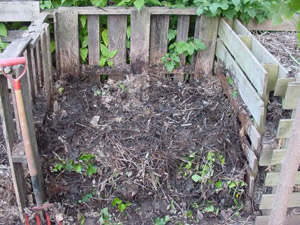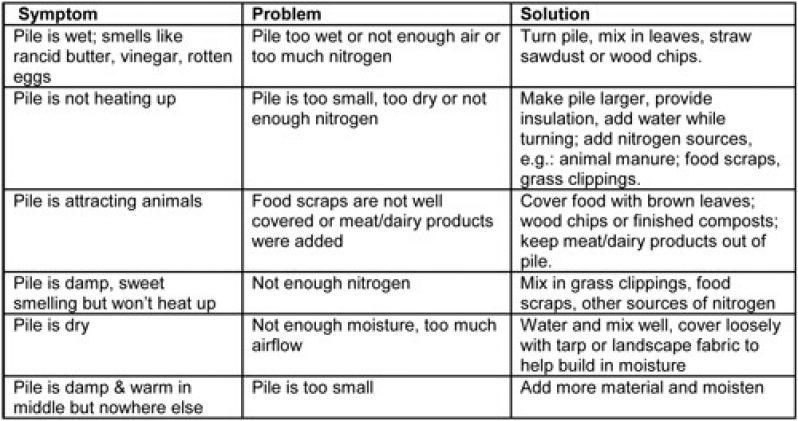THE article carried hereunder is the final in a series of articles on ‘back yard composting’ or turning kitchen or backyard waste into useful manure. These articles are based on a presentation by Ms. Rhonda Sherman, an Extension Specialist in the Department of Biological and Agricultural Engineering at North Carolina State University, USA.
Continued from last week:
Troubleshooting Compost Problems:
When is the compost done?
The following indicators will signal that your compost is finished: the pile is less than 10 degrees warmer than ambient, it is about one third of its original volume; you cannot recognise the original materials and the compost is black or dark brown and smells earthy (not like ammonia or rotten eggs). To make sure the compost is fully mature and stable, test it in a small area to ensure that it doesn’t prevent germination or damage plants.
How do I screen compost?
A simple screen can be made with a half inch mesh hardware cloth and a wood frame. The screen may be placed on top of a wheel barrow or inclined at an angle on the ground. Load the screen with compost and use your gloved hand or a square-end shovel to scrape the compost against the screen. Remove the screen to reveal sifted compost. Organic materials that were too large to pass through the screen may be added to another compost pile.
How do I use compost?
Apply finished compost a month before planting.
How do I improve poor soil?
Spade soil 12 to 18 inches deep and mix in the compost. Putting the compost deep in the soil will protect the plant against drought. Compost will hold moisture so plant roots can get it during the dry weather.
Sowing Seeds?
Put compost through a half inch sieve and then shred it with a hoe or use a rolling pin to make it very fine. Mix compost with equal parts – sand and soil (one third each.)
Trees and shrubs?
For newly planted shrubs and trees, top dress the soil surrounding the plant with compost and water it in.
For established shrubs, once a year, work half of a bushel of compost into the surface soil and then cover it with mulch. For established trees, start two feet from the trunk and cultivate the soil shallowly to one foot beyond the drip line of its branches. Rake one or two inches of compost into the two inches of soil.
What are some benefits of compost?
Compost contains macro – and micro-nutrients and releases them slowly, when plants need them.
It brings and feeds diverse life in the soil and makes soil easier to work with hand tools. It can suppress plant diseases and pests and encourages healthy root systems. Compost may also reduce the need for pesticides and fertilizers. Compost improves soil structure, texture, aeration, soil fertility, water holding capacity and reduces erosion.
Remember.
Composting is a controlled process that converts organic materials, leaves, kitchen scraps and garden waste into a valuable product. When compost is mixed with soil in gardens and lawns and houseplants it improves soil quality and help plants grow.



.jpg)









